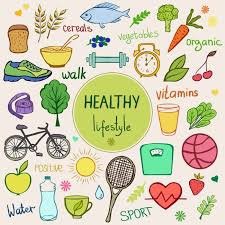Preventing Sexually Transmitted Infections: A Comprehensive Guide to Safe Practices
Protecting your sexual health is paramount. This comprehensive guide offers practical strategies for preventing sexually transmitted infections (STIs), empowering you to make informed choices and prioritize your well-being.
Understanding and Preventing STIs: Key Strategies
Knowledge is your first line of defense. Understanding the various types of STIs, their symptoms (or lack thereof, as many are asymptomatic), and transmission methods is crucial. Regularly accessing updated information from reputable sources like the CDC and WHO empowers you to make informed decisions about your sexual health.
1. Proactive STI Testing
Regular STI testing is vital, irrespective of the presence of symptoms. Many infections show no immediate signs, yet early detection is critical for treatment and preventing further transmission. Schedule regular check-ups with your healthcare provider to incorporate STI screenings into your routine wellness plan.
2. Utilizing Barrier Methods
Condoms and dental dams are effective barrier methods that significantly reduce the risk of STI transmission during sexual activity. These act as physical barriers, preventing the exchange of bodily fluids that may carry infectious agents. Correct and consistent use is paramount for optimal protection.
3. Vaccination for Protection
Vaccines are available for certain STIs, offering substantial protection against infection. Consult your healthcare provider to determine which vaccinations are recommended based on your individual risk profile and health history. These vaccines are a powerful preventative measure.
4. Conscious Partner Selection
Limiting the number of sexual partners directly correlates with reduced STI risk. The more partners involved, the higher the probability of encountering an infected individual. Focus on building healthy, communicative relationships rather than prioritizing quantity.
5. Open and Honest Communication
Open and honest communication with your sexual partner(s) is essential. Discussing sexual health histories, previous testing results, and preferred preventative practices establishes a foundation of mutual respect and shared responsibility in protecting your sexual well-being. This fosters a safer and more responsible sexual experience.
6. Maintaining Good Hygiene Practices
Practicing good hygiene, particularly genital hygiene, is a fundamental aspect of STI prevention. Regular washing with mild soap and water helps reduce the presence of potential pathogens. This simple step contributes to overall sexual health and hygiene.
7. Regular Healthcare Check-Ups
Regular check-ups with your healthcare provider allow for proactive STI screening and overall sexual health assessment. This proactive approach enables early detection and intervention, significantly improving outcomes. Your provider can also offer personalized advice tailored to your specific needs and risk factors.
8. Pre-Exposure Prophylaxis (PrEP)
For individuals at high risk of HIV transmission (e.g., frequent unprotected sex with multiple partners), Pre-Exposure Prophylaxis (PrEP) can significantly reduce the risk of infection. PrEP involves daily medication to prevent HIV acquisition. Discuss PrEP with your healthcare provider to determine its suitability for your individual circumstances.
9. Avoiding Shared Personal Items
Avoid sharing personal items such as razors, toothbrushes, and sex toys. These items can easily harbor and transmit infectious agents. Maintaining individual use of personal items minimizes the risk of cross-contamination.
10. Proper Sex Toy Cleaning and Hygiene
If using sex toys, meticulous cleaning before and after each use is crucial. Follow the manufacturer's instructions carefully, or use a mild soap and warm water solution. This simple practice effectively eliminates potential pathogens and ensures safe use.
11. Protection for Oral Sex
While oral sex is often perceived as lower risk, STIs like herpes, syphilis, and gonorrhea can still be transmitted. Utilizing dental dams or condoms during oral sex significantly reduces this risk. Always prioritize protection during all forms of sexual activity.
12. Staying Informed and Up-to-Date
Continuously seek updated information on STIs, preventative methods, and treatment options from credible sources. Staying informed empowers you to make responsible choices and adapt your practices to the latest scientific understanding.
13. Responsible Alcohol and Substance Use
Avoid excessive alcohol and drug use, as impaired judgment can lead to risky sexual behaviors and increased vulnerability to STIs. Make conscious choices regarding substance use to protect your overall health and safety.
14. Building Trust and Respect
Cultivating mutual trust and respect within your sexual relationships is paramount. Open communication about safe practices and sexual boundaries creates a supportive and healthy environment for both partners. This collaborative approach fosters a positive and responsible sexual experience.
In conclusion, preventing STIs necessitates a holistic approach that integrates knowledge, communication, and responsible behavior. By consistently implementing these strategies, you take proactive steps towards safeguarding your sexual health and well-being. Remember, your sexual health is a priority – invest in it wisely.
We encourage you to share your experiences and insights in the comments section below. Your contributions can help others navigate the complexities of sexual health.
```





